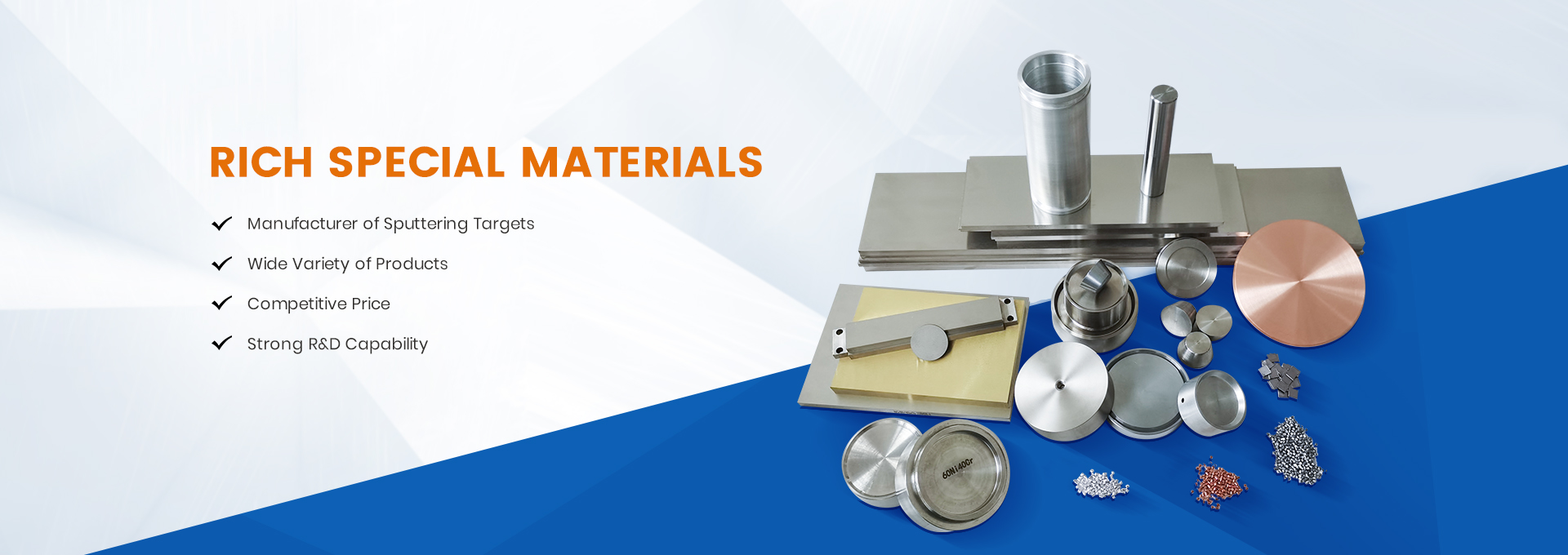It can be divided into DC magnetron sputtering and RF magnetron sputtering.
The DC sputtering method requires that the target can transfer the positive charge obtained from the ion bombardment process to the cathode in close contact with it, and then this method can only sputter the conductor data, which is not suitable for the insulation data, because the ion charge on the surface cannot be neutralized when bombarding the insulation target, which will lead to the increase of the potential on the target surface, and almost all the applied voltage is applied to the target, so the chances of ion acceleration and ionization between the two poles will be reduced, or even can not be ionized, It leads to failure of continuous discharge, even discharge interruption and sputtering interruption. Therefore, radio frequency sputtering (RF) must be used for insulating targets or non-metallic targets with poor conductivity.
The sputtering process involves complex scattering processes and various energy transfer processes: first, the incident particles collide elastically with the target atoms, and part of the kinetic energy of the incident particles will be transmitted to the target atoms. The kinetic energy of some target atoms exceeds the potential barrier formed by other atoms around them (5-10ev for metals), and then they are knocked out from the lattice lattice lattice to produce off-site atoms, And further repeated collisions with adjacent atoms, resulting in a collision cascade. When this collision cascade reaches the surface of the target, if the kinetic energy of the atoms close to the surface of the target is greater than the surface binding energy (1-6ev for metals), these atoms will separate from the surface of the target and enter the vacuum.
Sputtering coating is the skill of using charged particles to bombard the surface of the target in vacuum to make the bombarded particles accumulate on the substrate. Typically, a low-pressure inert gas glow discharge is used to generate incident ions. The cathode target is made of coating materials, the substrate is used as the anode, 0.1-10pa argon or other inert gas is introduced into the vacuum chamber, and glow discharge occurs under the action of cathode (target) 1-3kv DC negative high voltage or 13.56MHz RF voltage. Ionized argon ions bombard the surface of the target, causing the target atoms to splash and accumulate on the substrate to form a thin film. At present, there are many sputtering methods, mainly including secondary sputtering, tertiary or quaternary sputtering, magnetron sputtering, target sputtering, RF sputtering, bias sputtering, asymmetric communication RF sputtering, ion beam sputtering and reactive sputtering.
Because the sputtered atoms are splashed out after exchanging kinetic energy with positive ions with tens of electron volts energy, the sputtered atoms have high energy, which is conducive to improving the dispersion ability of atoms during stacking, improving the fineness of stacking arrangement, and making the prepared film have strong adhesion with the substrate.
During sputtering, after the gas is ionized, the gas ions fly to the target connected to the cathode under the action of electric field, and the electrons fly to the grounded wall cavity and substrate. In this way, under low voltage and low pressure, the number of ions is small and the sputtering power of the target is low; At high voltage and high pressure, although more ions can occur, the electrons flying to the substrate have high energy, which is easy to heat the substrate and even secondary sputtering, affecting the film quality. In addition, the probability of collision between target atoms and gas molecules in the process of flying to the substrate is also greatly increased. Therefore, it will be scattered to the whole cavity, which will not only waste the target, but also pollute each layer during the preparation of multilayer films.
In order to solve the above shortcomings, DC magnetron sputtering technology was developed in the 1970s. It effectively overcomes the shortcomings of low cathode sputtering rate and the increase of substrate temperature caused by electrons. Therefore, it has been developed rapidly and widely used.
The principle is as follows: in magnetron sputtering, because the moving electrons are subjected to Lorentz force in the magnetic field, their motion orbit will be tortuous or even spiral motion, and their motion path will become longer. Therefore, the number of collisions with working gas molecules is increased, so that the plasma density is increased, and then the magnetron sputtering rate is greatly improved, and it can work under lower sputtering voltage and pressure to reduce the tendency of film pollution; On the other hand, it also improves the energy of atoms incident on the surface of the substrate, so the quality of the film can be improved to a great extent. At the same time, when the electrons that lose energy through multiple collisions reach the anode, they have become low-energy electrons, and then the substrate will not overheat. Therefore, magnetron sputtering has the advantages of “high speed” and “low temperature”. The disadvantage of this method is that the insulator film cannot be prepared, and the uneven magnetic field used in the magnetron electrode will cause obvious uneven etching of the target, resulting in low utilization rate of the target, which is generally only 20% – 30%.
Post time: May-16-2022



